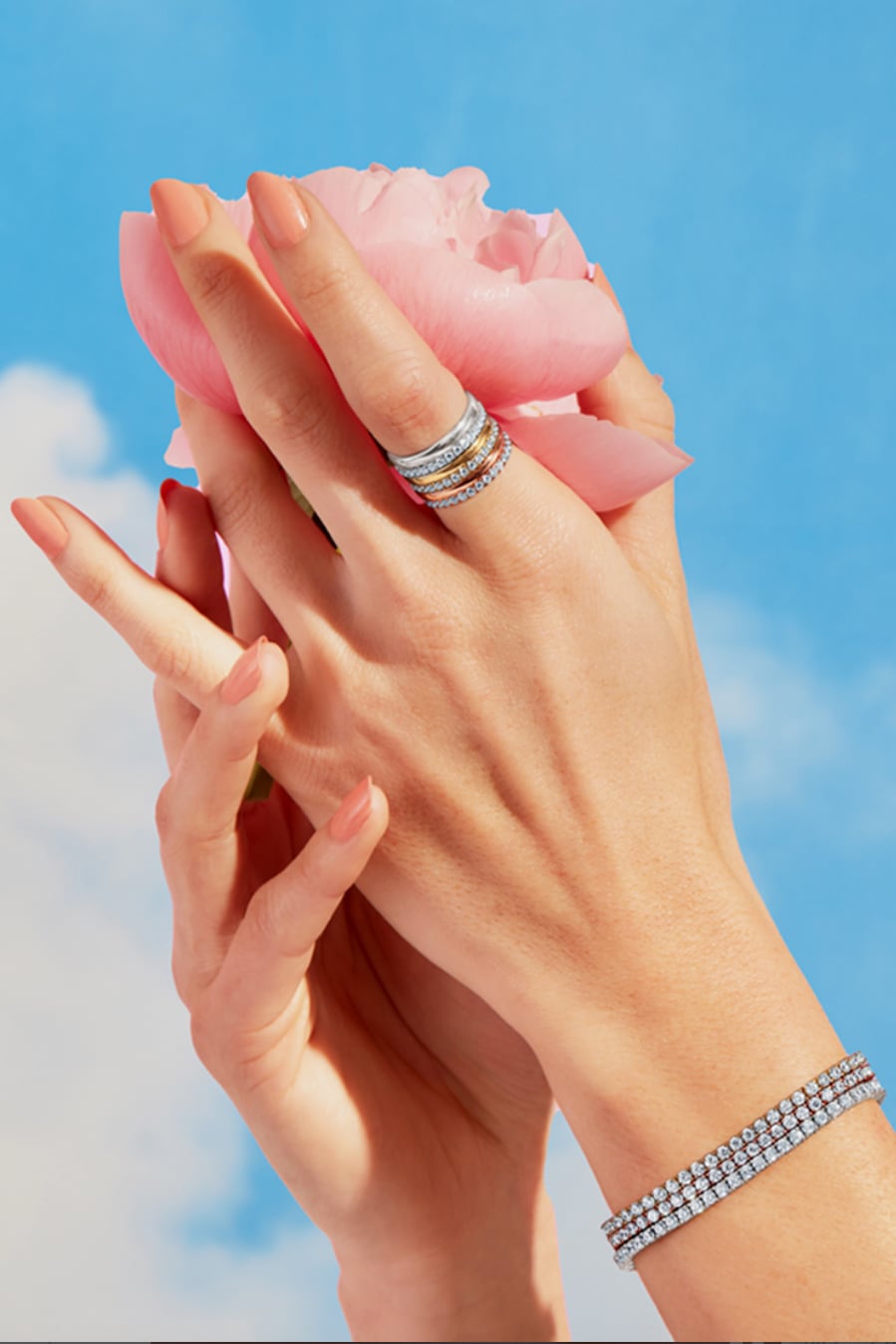
According to jewellery brand Skydiamond, its British-made gems are “mined entirely from the sky.” The company, which claims to make the world’s only carbon-negative diamonds, uses patented technology to manufacture stones out of carbon captured from the atmosphere.
But its marketing doesn’t make the fact that its stones are grown in a lab, rather than mined from the ground, clear enough for consumers, according to a ruling by the UK’s Advertising Standards Authority published Wednesday.
The finding, in response to a complaint filed last year by diamond industry lobby group the Natural Diamond Council, concluded that Skydiamond must prominently indicate that its stones are man-made in its advertising from now on. Several other complaints filed by the NDC around the same time were resolved after the brands involved agreed to change their marketing language to make the provenance of their stones clear, the ASA said. Skydiamond did not respond to a request for comment.
It’s the latest victory in a long-standing campaign by the diamond industry to ensure “natural” mined stones are distinguished from those forged in a lab as the market for man-made diamonds has grown rapidly over the last decade. The US Federal Trade Commission issued similar guidance in 2018.
“Natural Diamond Council is committed to the protection of consumer trust, and as a part of that commitment we highlight to authorities when we believe marketing is misleading,” NDC chief executive David Kellie said in an emailed statement. “Increased transparency in terminology usage will greatly support consumer confidence in the diamond industry.”
Lab-grown diamonds are chemically identical to those created deep within the earth. They began to hit the market commercially about a decade ago, threatening the cultural cachet and pricing power miners and jewellers had built around mined stones through a mix of carefully controlled supply and powerful advertising campaigns.
In response, the industry has for years waged a quiet marketing war, amping up efforts to promote natural diamonds, while dismissing man-made gems as inauthentic baubles and seeking to influence advertising standards.
Nonetheless, for some consumers the idea of a diamond grown in a lab has become a selling point, not a downside, reflecting growing interest in sustainability parts of the market. While synthetic diamonds can require a lot of energy to produce, the messy environmental and ethical baggage that comes with mined stones has proved a turn off for an emerging niche of conscious consumers.
According to jewellery industry analyst Paul Zimnisky, sales of man-made diamonds for jewellery are expected to hit $18 billion this year, accounting for around 20 percent of the worldwide diamond market and up sharply from $1 billion just under a decade ago. That’s not just down to competition. Lower prices for synthetic stones have helped expand the overall size of the market, according to Zimnisky.
Some brands have embraced the lab-grown trend. High-street jeweller Pandora has ditched mined stones altogether and watchmaker Breitling said in 2022 it would ultimately phase out natural diamonds. Meanwhile, LVMH invested in Israeli lab-grown diamond producer Lusix in 2022.
The latest ruling by the ASA is unlikely to do anything to change this broader trend, but it does reinforce the idea that mined and lab-grown diamonds are not created equal. Which one is preferable will be up to the consumer to decide.



